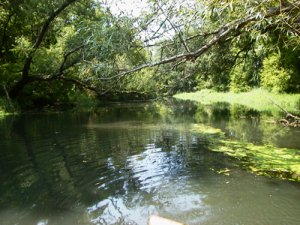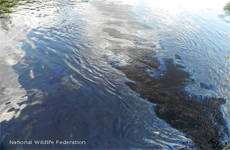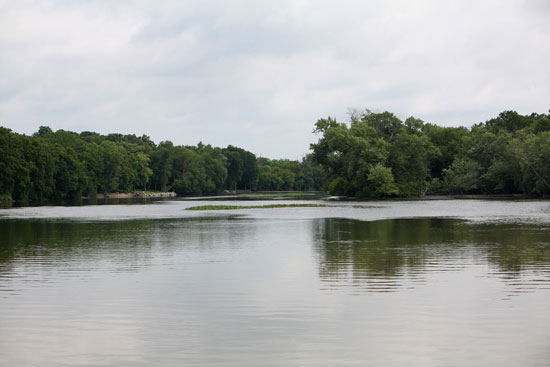Conditions in Grand Calumet River AOC improving, researcher says
0
Grand Calumet River
While surveying the Grand Calumet River in 1988, Thomas Simon found a deformed fish he later named Blinky. The fish was named as such for a striking abnormality: he was missing an eye.
Simon, a researcher at Indiana State University, said he has since seen an improvement in the condition of aquatic life in the river, which was deemed the most polluted river in the nation a few decades ago.
The Grand Calumet River flows for approximately 13 miles and mostly empties into Lake Michigan. It was historically known for being a habitat for several unique types of fish and other aquatic life.
That all changed in 1972. Deformed fish similar to Blinky were discovered, and the Grand Calumet River was listed as impaired for 14 possible uses. Large amounts of contaminants were found, including polychlorinated biphenyls, polynuclear aromatic hydrocarbons, and heavy metals, including mercury, cadmium, chromium, and lead.
Simon hopes to prove the river has shown significant progress this summer after U.S. Steel dredged a five-mile stretch of it in 2005. He will be the first researcher since 1972 to compile a report based on the entire region.
“What I saw a year after the dredging was phenomenal… I’m optimistic,” Simon said in a recent interview with the Post-Tribune of Northwest Indiana. “I think we’re going to see some positive changes, especially in the upper five miles.”
Simon said he will be conducting his research with a grant of $280,000 from the Great Lakes Restoration Initiative. He will begin to assess the Grand Calumet River and the surrounding wetlands in July, and he plans to submit a report to the EPA by March 2012.
The Grand Calumet will be the first of many severely polluted in the Great Lakes region to have its condition evaluated by Simon and his research team.
Simon said his goal is to evaluate the river in comparison to other Lake Michigan drainage areas.
“We want to at least look like the rest of the area,” he said.
Researcher: Grand Calumet River much healthier than data indicates [Post-Tribune of Northwest Indiana] Grand Calumet River Area of Concern [Environmental Protection Agency]
Image Credit: Environmental Protection Agency












